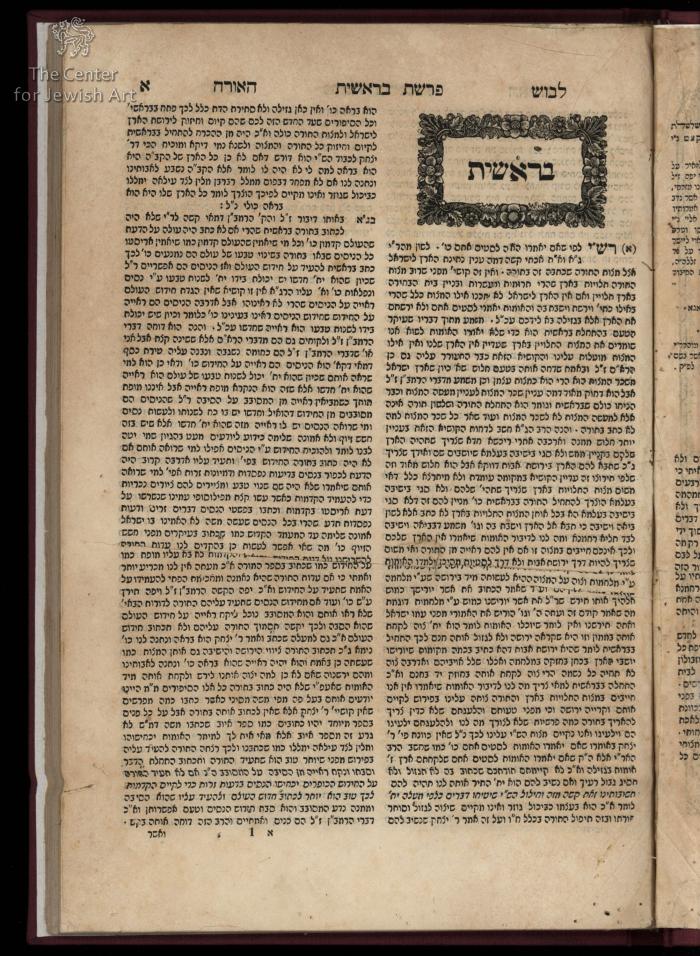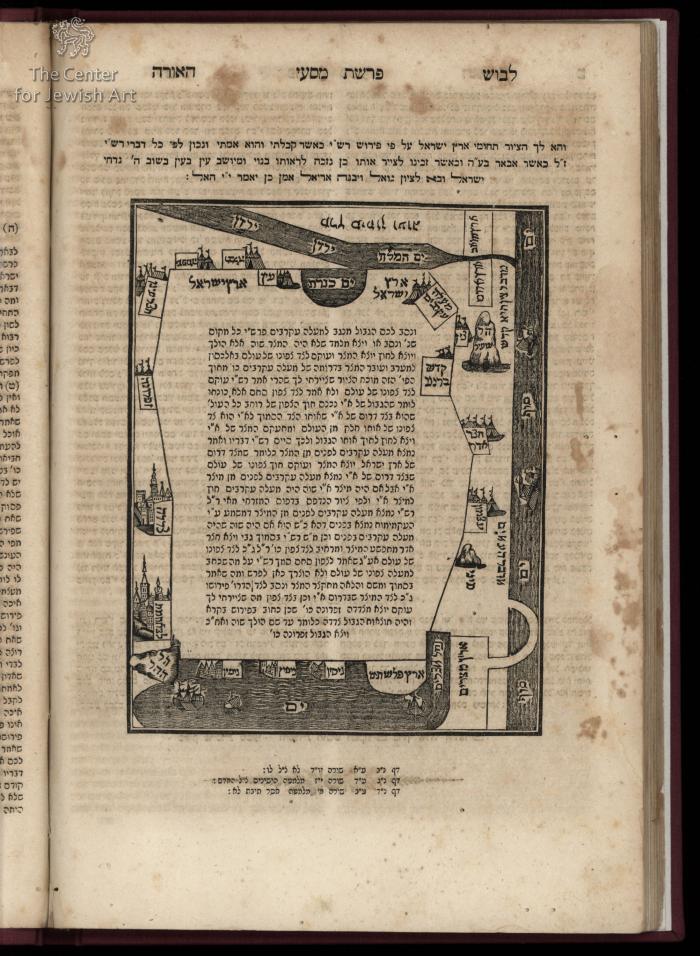Obj. ID: 35918 Levush ha-Orah by Mordechai ben Avraham Jaffe, Breslau, 1860

sub-set tree:
This text was prepared by William Gross:
A super-commentary on Rashi’s Torah commentary and other commentaries by R. Mordechai b. Avraham Yoffe. R. Yoffe is best known for his “Levushim,” a ten-volume codification of Jewish law that particularly stressed the customs of the Jews of Eastern Europe. From this work he is known as "the Levush". The first five “Levushim” comprise halakhic codes in the order of the Turim of R. Jacob b. Asher; the other five (including the present volume, which is the sixth “Levush”), contain commentaries and sermons.
Includes the Hebrew “map” of the Holy Land, indicating its boundaries according to Rashi’s interpretation (60v). This map appeared in the first edition of Levush ha-Orah (Prague, 1603) (see B.588).
Mordecai ben Avraham Yoffe (or Jaffe or Joffe) (c. 1530, Prague – March 7, 1612, Posen; Hebrew: מרדכי בן אברהם יפה) was a Rabbi, Rosh Yeshiva and posek. Known as the “Levush”, he studied under Moses Isserles and Solomon Luria; Mattithiah b. Solomon Delacrut was his teacher in Kabbalah. He also studied philosophy, astronomy, and mathematics (apparently at the instance of Isserles). He was Rosh Yeshiva in Prague until 1561, when, by order of the emperor Ferdinand, the Jews were expelled from Bohemia. Yoffe then went to Venice and studied astronomy (1561-71). In 1572 he was elected rabbi of Grodno; in 1588, rabbi of Lublin, where he became one of the leaders of the Council of Four Lands. Later Yoffe accepted the rabbinate of Kremenetz. In 1592 he was called as rabbi to Prague; from 1599 until his death he occupied the position of chief rabbi of Posen.
In addition to his Torah study, writing and teaching the Levush was involved with communal needs, and attended the fairs at Yaroslav and Lublin, where community leaders and rabbis from large communities met to discuss matters of general interest. These meetings were the forerunners of the Council of the Four Lands and the Council of Lithuania.
While still in his youth, R. Yoffe had the idea to compile a book on Jewish law, which would be used for making halachic decisions. The appearance of Caro's Shulchan Arukh, a digest of his Beit Yosef, led Yoffe to consider whether he should continue writing his own work. On reflection, he concluded that there was room for it since it would contain "those laws observed by the Ashkenazi Jews of Bohemia." When Moshe Isserles' Gloss to the Shulḥan Arukh (called Mappah) appeared in Cracow in 1578, Yoffe felt that Isserles had been too brief as had Caro in the Shulḥan Arukh, and decided to resume his original work, "that will be midway between the two extremes: the lengthy Beit Yosef of Caro on the one hand, and on the other Caro's Shulḥan Arukh together with the Mappah of Isserles, which is too brief. " In all, Yoffe worked on this book almost 50 years. However, after completing it he was confronted by another Rabbi who had also written a similar work, although not as extensive as Yoffe's. They reached an agreement to publish Yoffe's book and to present the other Rabbi's additional comments in glosses (hagahos) throughout the book [see introduction to his Levush].




